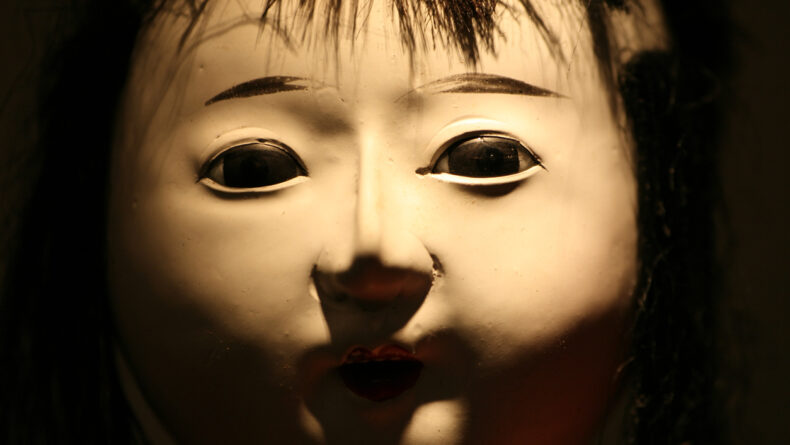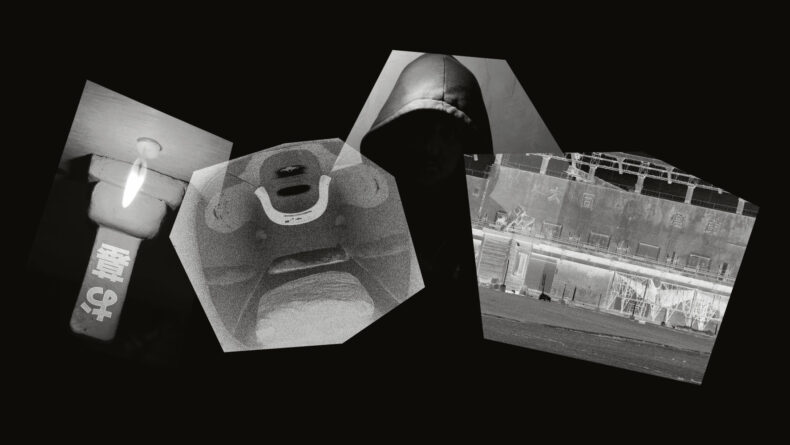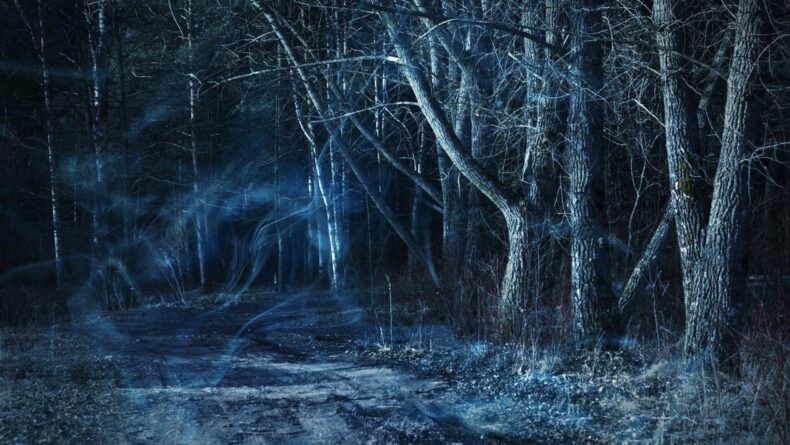Yurei: Japanese Ghost Tales That Will Keep You Up At Night
Will You Dare To Turn Off The Light?
Obon holidays are close but the air is already filled with mystical and inexplicable eerie notes. Summer foliage is fluttering, but you’re stuporous and afraid to look at the trees because you know—there’s no wind outside...
If you high-key like when chills run down your spine, let us introduce to you yurei—the vast category of Japanese folklore which includes internationally famous legends about revengeful and spiteful ghosts. Unlike some stories about yokai, which mostly tend to be playful and hilarious, these Japanese ghost stories are more sorrowful and uncanny, and probably will make you feel uneasy.
1. Goryo, the Noble Dead
Literally translated as “honorable spirit,” goryo are ghosts from the aristocratic class who suffered tormented and agonizing deaths. First mentions of them go back to the Heian period, they are believed to be “the spirits of powerful lords, who have been wronged, that were capable of catastrophic vengeance.” Existing solely for vengeance, goryo are a type of ghost that chase after those who wronged them during their life and wreak havoc on them, causing calamities and disasters.
One quite popular legend is the one of a goryo called Shinto Kami, also known as Tenjin. It is said that the years following the unfair murder of government official Michizane by one of the members of the Fujiwara clan, thunders and heavy rains pummeled the capital city causing fires and floods. Moreover, the Fujiwara chief and Emperor Daigo’s crown prince soon died, which completely convinced the court that all calamities and casualties were caused by the restless spirit of Michizane. In order to quell him, the emperor himself burned the order of exile and promoted Michizane postmortem. On top of that, Michizane was idolized as Tenjin sama, which means “sky deity” and literally made a patron god of poetry, calligraphy and justice.
2. The Rage of the Onryo
This kind of Japanese ghost story also relates to vengeful spirits but unlike the goryo, which is not necessarily a wrathful spirit, the onryo is almost always a malicious ghost as they died full of anger, and only return to scare the living to death and take their souls. Victims of domestic abuse or women martyred by wicked stalkers or maniacs will most likely turn into onryo in the afterlife. This category also serves as a staple for J-horror movies and has appeared as the renowned Kayako from The Grudge or Sadako from The Ring.
It is believed that once an onryo decided to manifest itself, the victim starts to experience nausea, heavy headache and pain in the chest. When just passing by, this ghost could look like a collapsed woman, probably unconscious but as you approach, she starts to make weeping, groaning sounds and whispers incomprehensible words. Eventually, she levitates towards the victim reaching for the head in a bid to catch her or him, and finally covers the victim with its unkempt thick hair. Due to the dark and heavy aura around the onryo, the victim experiences an unbearable headache, which eventually leads to death.
3. The Burden of the Ubume
This is the tragic ghost of a woman who has died during childbirth—with or without her baby. She returns to the living as she still cares about left children. She is usually depicted as a baby-carrying woman, who gives her baby to passersby and then disappears. Once the passerby gives a look at the baby, it turns out that it was merely a big rock or bundle of leaves. She is sometimes depicted as a dreadful woman in a blood-stained koshimaki (Japanese summer attire) carrying an underdeveloped fetus.
In the case where the baby survived, the ubume mother strives to save and care for her still-living child by any means. She can enter the shops and buy some food for her baby, but instead of money, the seller will get a bundle of dry leaves. She also tries to lead the people to a place where her baby is, so it can be found and buried or adopted by living relatives.
4. Shiryo, Deader than Dead
Shiryo are the Japanese ghosts of those who just left this world. The kanji “shi” (死) in this word means “death” and strongly hints that this sort of yurei is not to be romanticized or taken as a mystically attractive. Shiryo usually appear just after death, commonly to say one last goodbye to relatives. But sometimes things turn out differently and shiryo appear not only for a farewell but also to take their beloved along with them.
The story: a girl was left alone after the abrupt death of her father. She was grieving and devastated. One night, her father’s spirit visits her but unfortunately, he intended not to say one last goodbye but to drag his precious daughter into the world of the dead. Despite friends and acquaintances agreeing to stay overnight to watch over her, the ghost of her father kept appearing for a while, disturbing and scaring the heck out of everyone. Over time, as suddenly as they’d come, visits stopped.
5. Funayurei, the Ship Ghosts
According to some legends, funayurei are remnants of those who sank in shipwrecks and crave for vengeance due to their death. Trying to take the living away with them, Funayurei cause sea storms or damage ships. They are usually depicted as scaly fish-like men with droopy eyes and a deformed head. They appear in the sea standing on the ghost ship blazing in the foggy night and willing to expand their gruesome crew.
Legends say that once the funayurei crew notices the bow of the ship they won’t leave until their number multiplies. In order to wreck the ship, they rush towards the living, forcing the flustered crew to steer away so harshly that the ship overturns. However, it’s believed that if sailors throw some food into the water, funayurei will leave them alone, that they won’t chase after the crew itself but only after the food—which is unlikely.
6. Don’t Trust Fudakaeshi
Fudakaeshi are notorious for their ability to persuade people to remove their protective charms against fuda (ghosts) and let vengeful spirits in. Fudakaeshi was firstly described in Kyoka Hyaku Monogatari—a collection of comical poems of the late Edo period about Japanese spirits. Being yurei themselves, fudakaeshi can not touch or remove protective fuda, but by tempting or bribing foolish and greedy people, they achieve this goal and can attack their poor victims.
Fudakaeshi usually appears as a long-haired, semi-transparent woman, clad in a kimono. The legend of the fudakaeshi can be found in the ghost story Botan no Doro (The Tale of the Peony Lantern) and is more sad than creepy. It tells about a female ghost who fell in love with a human but couldn’t get into his house because of the protection charms. Desperate to be united with her beloved, she begs him to remove the charm and let her in. Eventually, the man falls in love, too, and removes the protective talismans. As a result, they can spend a night together but this forbidden affair cost the man a lot: the ghost drains him of all life.
7. Suppon No Yurei, a Ghost on Your Plate

Yurei are usually ghosts of dead people who long for an act of vengeance, but sometimes it could be a spirit of something you’ve just ingested! Suppon no yurei are softshell turtles that are coming back to haunt humans who are involved in the selling, eating and catching activities of suppon turtles.
The legend says that a man who was making his living from catching and selling suppon ended up suffering from the grudge of caught turtles. Every night, long legless ghosts with prominent lips haunted the poor victim. Later on, he discovered in horror that his newborn son was looking like a softshell turtle. Disfigured and ugly, he had pointed long lips, narrow large eyes, and webbed toes and fingers. To add to the horror, his turtle-like mouth prevented him from eating normal food and the only thing he could eat was worms.
So think twice before eating something you’ve never tried, and once you visit Japan, make sure to have a protecting charm with you.


















Leave a Reply